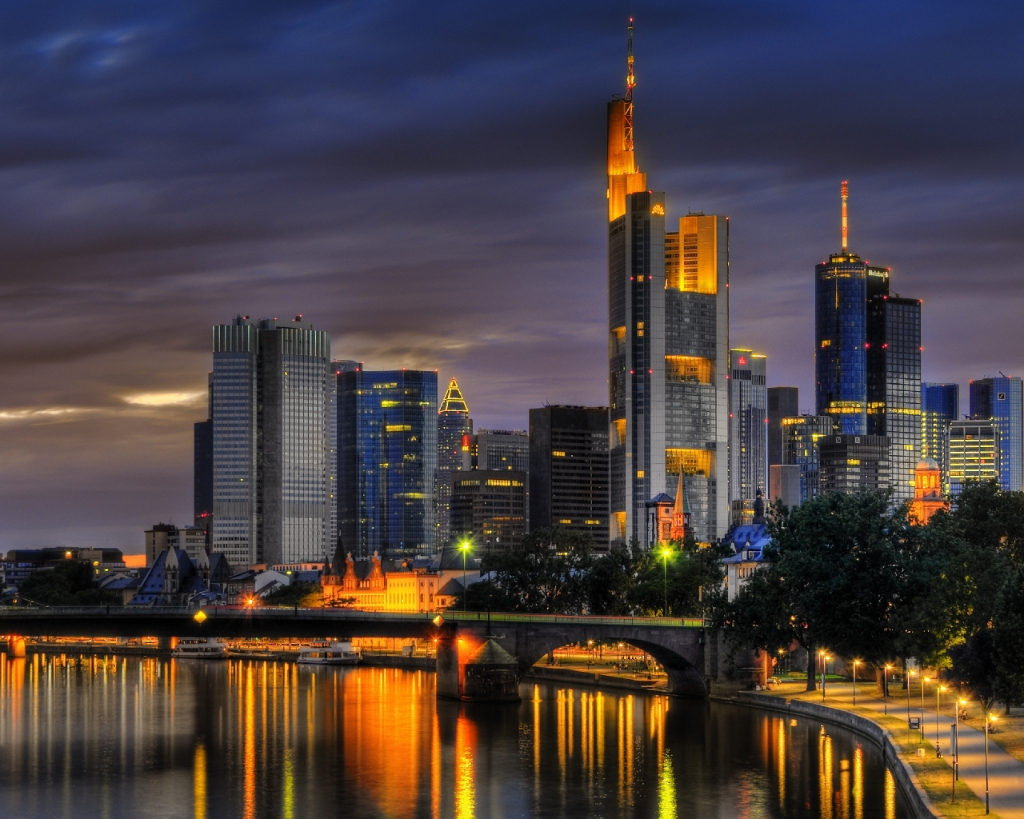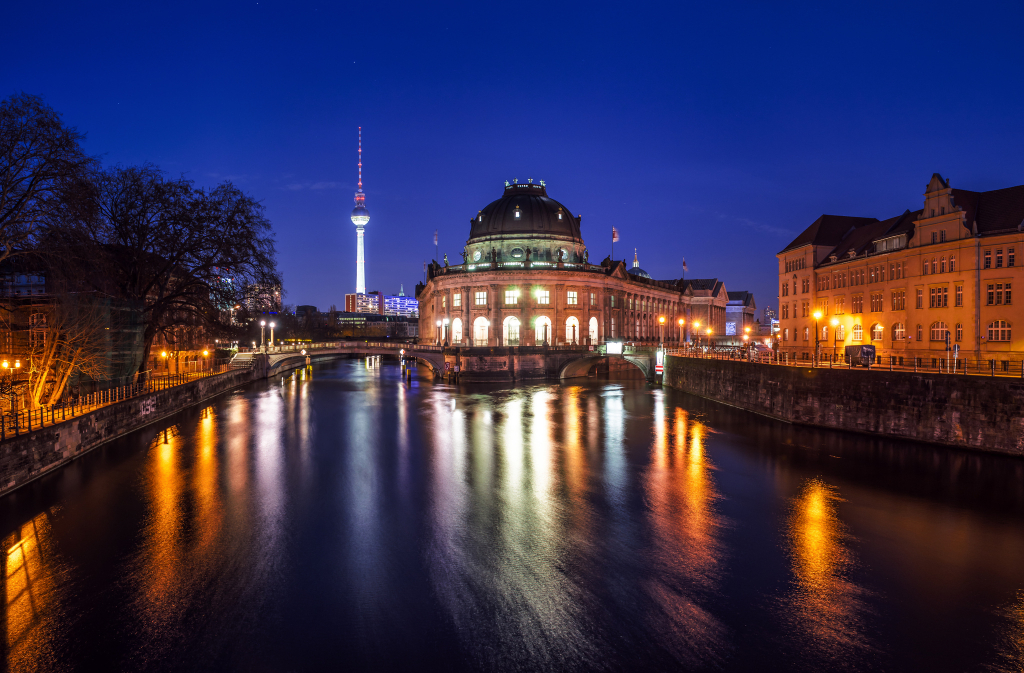German culture began long before the rise of Germany as a nation –state and spanned the entire German-speaking world. From its roots, culture in Germany has been shaped by major intellectual and popular currents in Europe, both religious and secular . German is the official and predominant spoken language in Germany. 64.1% of the German population belongs to Christian denominations: 31.4% are Roman Catholic, and 32.7% are affiliated with Protestantism . Germany is a modern, advanced society, shaped by a plurality of lifestyles and regional identities. The country has established a high level of gender equality, promotes disability rights, and is legally and socially tolerant towards homosexuals.
Misunderstood by many, Germany is one of the most varied and charming countries on the continent. Anyone expecting a homogenous nation conforming to old Teutonic stereotypes is in for a shock. As a destination, it offers a clutch of truly lovely cities, culture served up in hefty portions and rural scenery so pretty you’ll wonder why it isn’t on every tourist hit list.
The country occupies a prime position at the heart of Europe – both literally and figuratively. It is home to the biggest economy on the continent, has more inhabitants than anywhere else in the EU and shares land borders with no less than nine other nations. It’s no surprise, then, that today’s Germany is more diverse and cosmopolitan than old stereotypes suggest; mixing time-honoured nationalism and tradition with multicultural modernism and self-confidence. It’s the nation’s urban highlights that immediately draw the attention. Berlin is the definition of dynamism, having forged a good-time reputation for groundbreaking creativity while still keeping sight of its past.
Elsewhere, the likes of Cologne, Munich and Hamburg provide the capital with able support. Not only are they rich in history, whether in the forms of classical music, fine art or medieval architecture, but they also put pay to the notion that Germans don’t do gastronomy. These days, you can dine and drink extremely well in Deutschland.
Then there’s the beautiful German countryside. From the sky-scraping peaks of the Bavarian Alps and pale cliffs of the Jasmund National Park to the castles of the Rhine and moors of the Mecklenburg Lake District, it’s nirvana for hikers, cyclists, boaters, motorists and skiers alike.
The national airline is Lufthansa (www.lufthansa.com). Prices for flights to Germany vary considerably according to the season – June to August being the most expensive and the winter months (Christmas and New Year excluded) being the cheapest.
• Typical Costs
Accommodation – Accommodation in Germany is quite cheap compared to neighboring Euro-zone countries. Hostels range from 10-30 EUR per night for a dorm room. A private room costs around 50 EUR per night and budget hotel prices begin in the same price range.
Food – Food in Germany is very cheap. You can eat out from outdoor vendors for around 2-4 EUR (great sausages and bratwurst). Pre-made sandwiches cost around 5 EUR. Fast food will cost around 7 EUR. Beer usually costs 5 EUR for a nice pint. If you eat in the beer halls, a traditional German meal plus a beer will cost around 14 EUR. Turkish, middle eastern, and Asian food can be found for as little as 5 EUR. A week’s worth of groceries will cost around 35-65 EUR.
Transportation – High speed trains are very expensive in Germany. Berlin to Munich can cost over 180 EUR. Most of the other intercity trains cost between 40-70 EUR for a second class ticket. It’s cheaper to take a slow regional train or overnight bus, and then you save on accommodation. City transit systems cost around 1-3 EUR per single ticket.
Activities – Museums cost between 1-15 EUR. Bike tours and river cruises can cost 24-40 EUR. Most city tours are between 12-25 EUR. Renting a bike costs about 18 EUR per day.
Money Saving Tips
Accommodation – Accommodation in Germany is quite cheap compared to neighboring Euro-zone countries. Hostels range from 10-30 EUR per night for a dorm room. A private room costs around 50 EUR per night and budget hotel prices begin in the same price range.
Food – Food in Germany is very cheap. You can eat out from outdoor vendors for around 2-4 EUR (great sausages and bratwurst). Pre-made sandwiches cost around 5 EUR. Fast food will cost around 7 EUR. Beer usually costs 5 EUR for a nice pint. If you eat in the beer halls, a traditional German meal plus a beer will cost around 14 EUR. Turkish, middle eastern, and Asian food can be found for as little as 5 EUR. A week’s worth of groceries will cost around 35-65 EUR.
Transportation – High speed trains are very expensive in Germany. Berlin to Munich can cost over 180 EUR. Most of the other intercity trains cost between 40-70 EUR for a second class ticket. It’s cheaper to take a slow regional train or overnight bus, and then you save on accommodation. City transit systems cost around 1-3 EUR per single ticket.
Activities – Museums cost between 1-15 EUR. Bike tours and river cruises can cost 24-40 EUR. Most city tours are between 12-25 EUR. Renting a bike costs about 18 EUR per day.
Top Things to See and Do in Germany
Get lost in Berlin – Germany’s hip capital has world-class museums, history, funky neighborhoods, and one of the best nightlife’s in Europe. I didn’t like this city at first but after visiting a second time, I saw the amazing city everyone told me about. From the museums to the art and music scene to the great bars and cheap food, Berlin is is amazing, and one of the cheapest European capitals.
Munich – Berlin’s quiet, upscale cousin – Munich – is a city steeped in history with small streets, great beer halls, amazing food, a beautiful park, surfers, and a royal palace. It’s one of Germany’s more expensive cities but it’s a beautiful destination and there are a lot of nearby Bavarian towns that make for good day trips.
Hang out at Oktoberfest – The world’s largest two-week beer festival filled with huge steins and giant pretzels. I went there for 5 days and had the time of my life. Buy some lederhosen, raise a glass, and sing some German beer songs. ‘Nuff said. .
Hike the Black Forest – Located near the French border, the Black Forest is named so because of the dark green pine trees in the area. There are hundreds of miles of hiking trails worth exploring. You can spend some time stopping in towns that are famous for their cuckoo clocks and typical German food. It’s a beautiful area best seen in the fall.
Fall in love on the Romantic Road – A string of historic cities in Bavaria, the Romantic Road is a great route that helps you explore majestic Bavarian towns surrounded by snow capped mountains. It can get quite touristy but it’s a beautiful and relaxing area to go with a significant other or family.
Explore Lake Constance – Lying along the country’s southwestern border with Switzerland and Austria, Lake Constance is Germany’s largest freshwater lake. The area around the lake and up the lower Rhine valley has a very mild, amiable climate and fertile grounds, making it the country’s most important area for wine and fruit production.
Hike Berchtesgaden National Park – This national park is an alpine heaven of lush forests, steep rock faces, crystal clear lakes, sleepy villages, and rolling meadows. It’s just you, the chirping of birds, and cows ringing their brass bells. Well-marked trails wind through the spectacular scenery, which brims with opportunities for hiking, and cycling.
Check out Trier – This is the oldest German town in the country. With a 2000-year-old history, Trier was home to six Roman emperors and contains a number of impressive ancient ruins. The most outstanding example is by far the Black Gate – a monumental structure that was once part of the city walls. Nested in the Moselle river valley, picturesque Trier is crowned with myriad vineyards and pastoral villages. It is very much an off-the-beaten-path destination.
Visit Dresden – Explore the treasures and grand buildings of this baroque beauty, which is bisected by the majestic Elbe River. This city was completely rebuilt after the war and today is one of the biggest nightlife spots for young people.
Spend a day in Cologne – A historic city with a great cathedral. Cologne is a great place to stop in west Germany on your way to or from the Netherlands. The cathedral itself is worth the visit. It’s huge!
Stand in awe of Neuschwanstein Castle – This is a 19th-century neo-romantic palace perched on a rugged hill near Füssen. The palace was commissioned by “crazy” Ludwig II of Bavaria as a retreat and as an homage to Richard Wagner. It’s the model for the Disney castle, and definitely on a Germany bucket list.
– Another great city of Germany, Frankfurt is home to several different restaurants, historical sights, and mentally-stimulating attractions. There is a great exhibition hall—one of the largest in the world—and several science museums to check out. It’s less expensive compared to other cities in Germany, and a great airport hub to fly in and out of.
Visit Olympia Park – Located in Munich, this massive complex was originally constructed for the 1972 Olympic Games. It is topped by the largest roof in the world, which spans over 700,000 feet. There is a great restaurant here and the tour is pretty awesome. The BMW Museum is also nearby.
Head to Schloss Colditz – Originally built to be a Renaissance palace, this interesting structure has a long, bizarre history. At various points in history, it’s been a hunting lodge, a poorhouse, and even a mental hospital. It is most famous for being a prison during WWII. There is a museum within the palace as well.
Tierpark Hagenbeck – Essentially a zoo, this open enclosure is over 60 acres in size and is home to more than 2,500 animals. In addition to the classic attractions, there is a petting zoo, a miniature railway, pony rides, a great playground for the kids, and a Japanese garden for the adults. It is located in Hamburg.
All in all, Germany is synonymous with a lot of things – beer, food, sausages, seriousness, hiking, castles, and parties. Yet Germany is more than beer halls and bratwurst. There is a vibrant art and music scene in Berlin, beautiful forests in the west, great cathedrals and castles, and picturesque “sound of music” cities and the alps in the south, and historic cities throughout the country. Germans are often thought of as serious people who aren’t as wild as their southern European neighbors. Yet, while they may be serious and focused, they are also some of the nicest, most helpful people in Europe. They aren’t as “cold” as they appear. Germany is a large country with a lot to offer travelers at really affordable prices.




